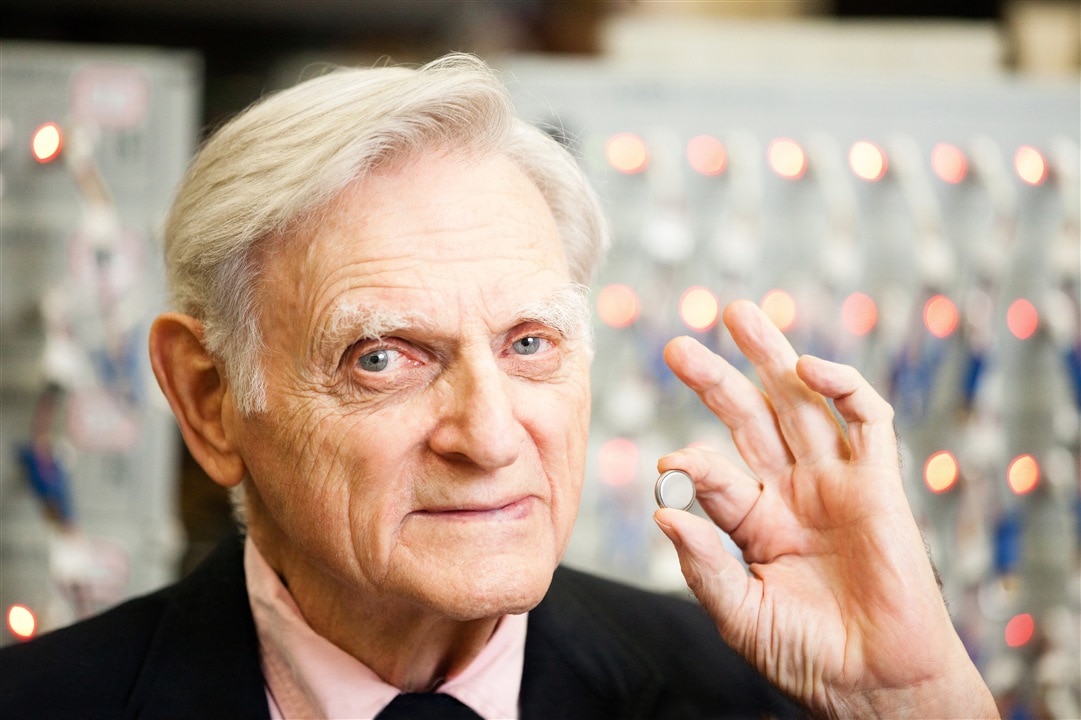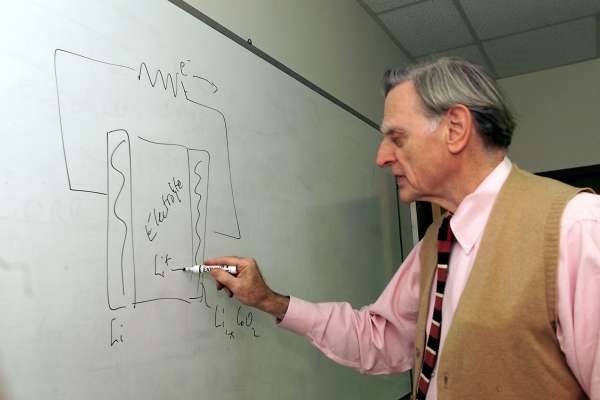
Goodenough helped develop the lithium-ion battery. (Image Credit: The University of Texas at Austin)
The University of Texas at Austin announced that lithium-ion battery inventor John B. Goodenough, 100 years old, passed away on June 25th. He served as an engineering professor at the university, and his contribution helped with smartphone and wireless electronics development. Goodenough received the Nobel Prize in chemistry in 2019 for his lithium-ion battery work.
“John’s legacy as a brilliant scientist is immeasurable — his discoveries improved the lives of billions of people around the world,” said UT Austin President Jay Hartzell. “He was a leader at the cutting edge of scientific research throughout the many decades of his career, and he never ceased searching for innovative energy-storage solutions. John’s work and commitment to our mission are the ultimate reflection of our aspiration as Longhorns — that what starts here changes the world — and he will be greatly missed among our UT community.”
Goodenough was born in 1922 in Germany but grew up in the northeastern U.S. and attended the Groton School in Massachusetts. He also attended Yale University, earning his bachelor’s degree in mathematics in 1944. He also served as a meteorologist in the U.S. Army during WW2. Goodenough earned a Ph.D. and master’s degree in physics from the University of Chicago in 1952. While attending the University of Chicago, he studied under Nobel laureate Enrico Fermi and John A. Simpson.
He launched his career in 1952 when he worked at MIT’s Lincoln Laboratory, stayed there for 24 years, and contributed to the development of RAM for computers. In addition, he became an orbital physics pioneer and a theory of magnetism founder called the Goodenough-Karamouni Rules, which helps with magnetic materials research and has a massive impact on telecommunications device development.

Image showing John Goodenough teaching his classroom. (Image Credit: The University of Texas at Austin)
Goodenough moved on to the University of Oxford, serving as a professor and head of the Inorganic Chemistry Laboratory. That's when he developed the lithium-ion battery. At 97 years old, Goodenough shared the Nobel Prize with Stanley Whittingham and Markia Yoshino for the lithium-ion battery invention. At the time, Whittingham wanted to find an alternative energy source, so he devised an approach to harness lithium’s potential energy. But his battery turned out to be too unstable.
Goodenough then improved that prototype by using a different metal compound and increasing the battery’s potential energy to four volts. His contribution, therefore, led to powerful and durable batteries for everyday applications. Yoshino decided to use a carbon-based material for lithium-ion storage, making the battery commercially viable. All their efforts resulted in a very lightweight, powerful, and rechargeable battery.
In 1986, Goodenough joined UT Austin with ambitions to discover the next battery breakthrough and teach battery innovators. In 1991, Sony commercialized the lithium-ion battery, in which Goodenough laid the foundation for a prototype. His research group went on to discover a safer, environmentally friendly cathode material in 1996.
“John’s seven decades of dedication to science and technology dramatically altered our lifestyle, and it was truly a privilege to get to work with him for so many years,” said Ram Manthiram, professor in the Cockrell School who was a longtime friend and associate of Goodenough’s and joined him at UT in the 1980s. Manthiram, a battery pioneer in his own right, delivered the Nobel lecture in Stockholm on behalf of Goodenough. “John was one of the greatest minds of our time and is an inspiration. He was a good listener with love and respect for everyone. I will always cherish our time together, and we will continue to build on the foundation John established.”
